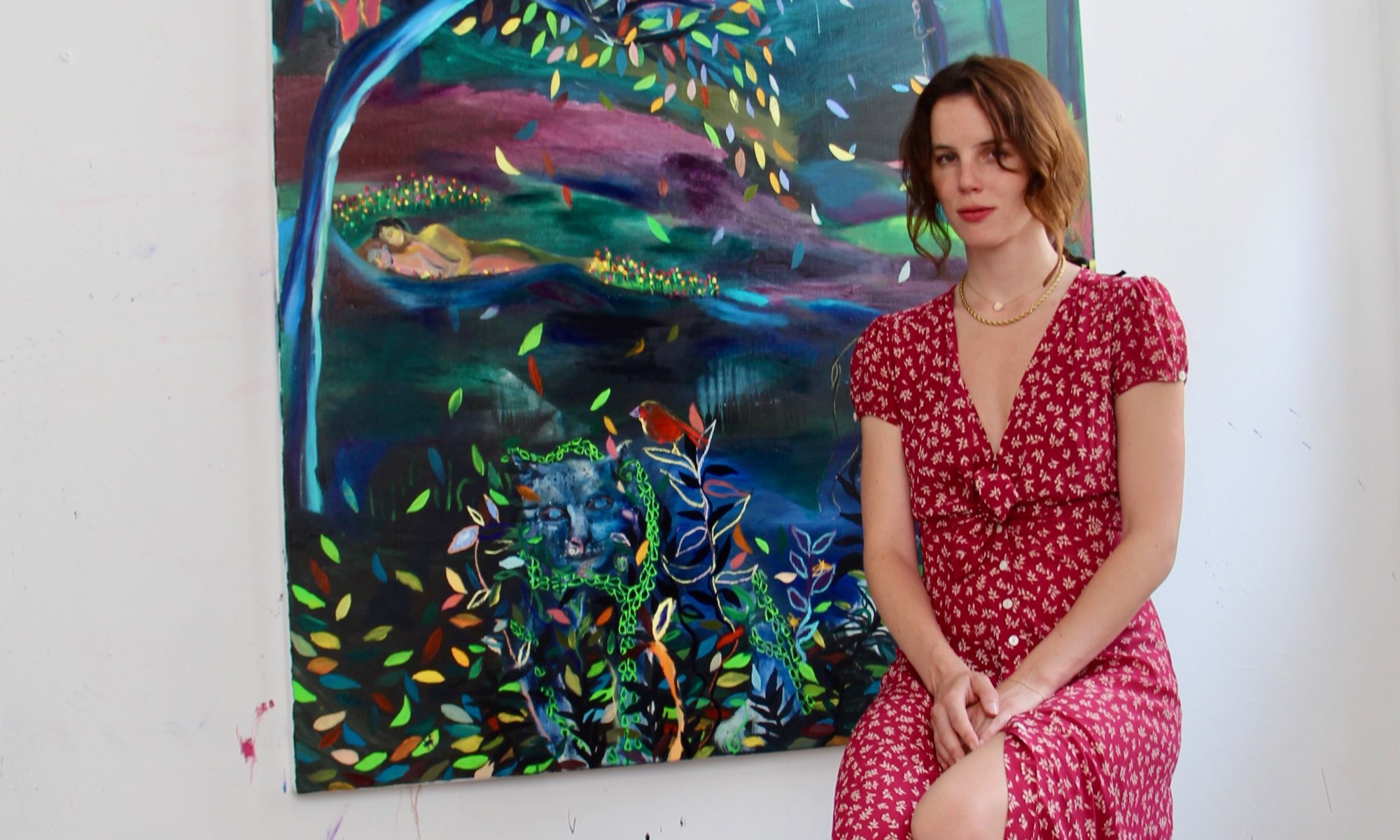ALICE GRENIER NEBOUT, Nostalgia of a Lost Paradise
Alice Grenier Nebout is a French-Canadian artist who lives and works in Paris. We met her in her charming Parisian studio where she presents us her fantasies on canvas.
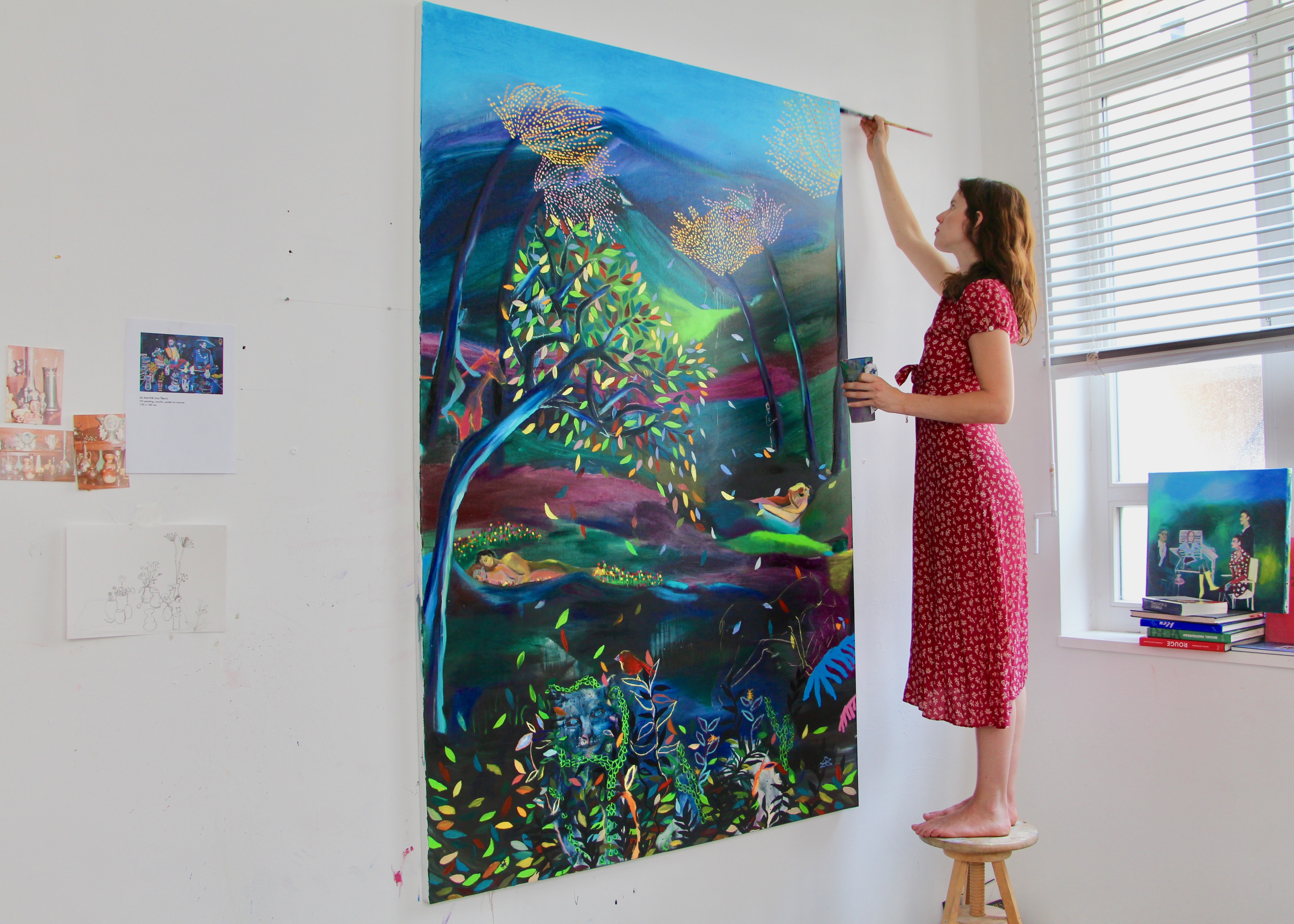
You told me that all started one summer with a boat, could you tell us this story?
This story is about a little girl who went on vacation with her dad but was terribly bored. This father, who is none other than mine, gave her brushes and paint to occupy her. The young girl set her pictorial sight on an old boat on the edge of the lake next to which they lived.
This boat became my lifeline, both an artistic support and a key to another world. I spent my days on this lake observing fish, frogs and birds. Somehow, I’m still that same child discovering the world. Basically, this boat symbolizes my encounter with painting and nature, two essential elements in my artistic practice.
“I seek to reunite the human with its natural environment.”
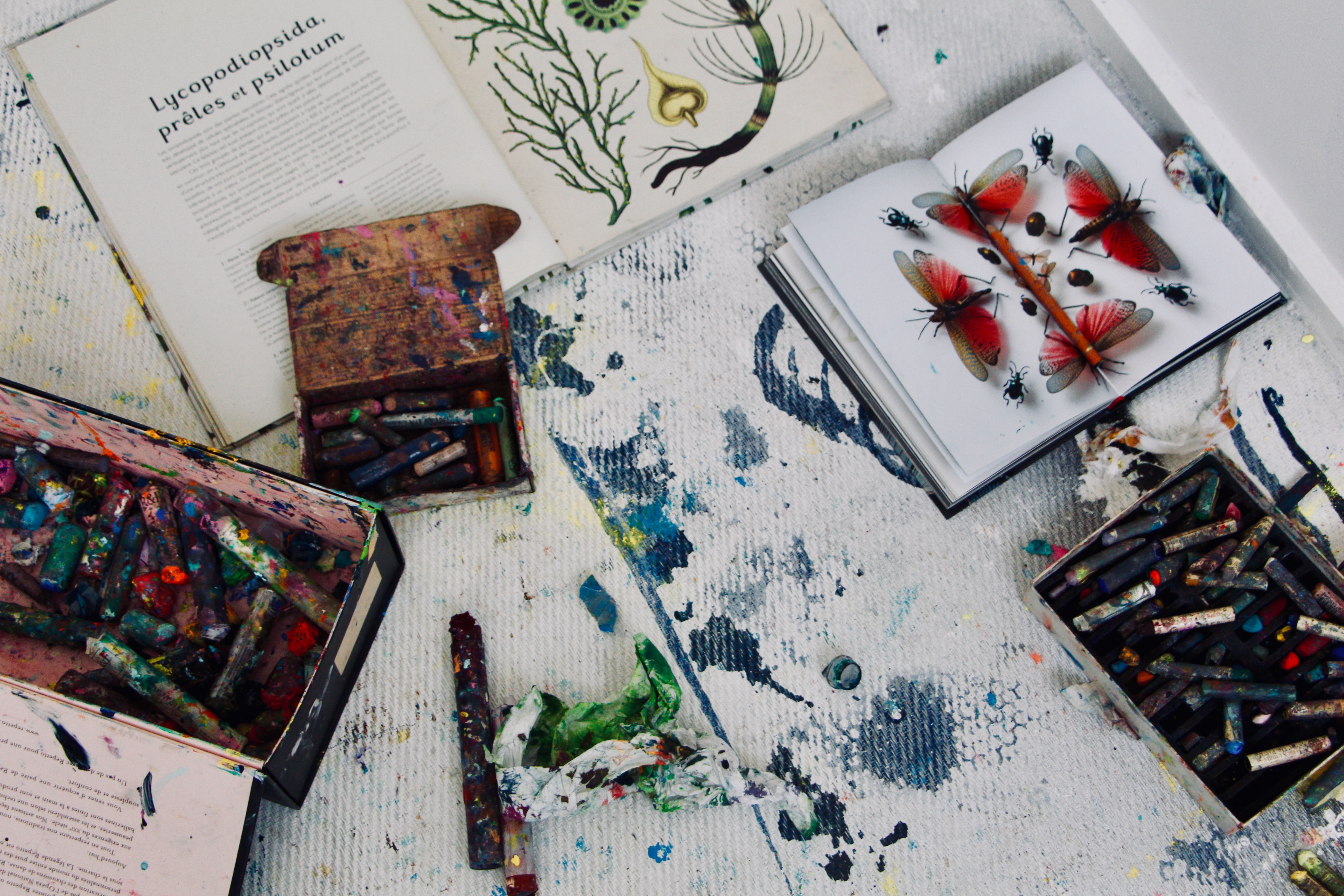
Human, nature, and animal, three motifs that recur in your paintings.
This trio, almost sacred to me, composes my paintings both in form and content. I seek to reunite humans with their natural environment, which requires colors capable of uniting nature, animal and man, such as blue which recalls the sea and its depth, the mystery or the third eye which opens us to the world and its knowledge. Moreover, it is important that there is this unity where these elements become universality of the world.
“These paintings are my only way to contribute to the rescue of nature.”
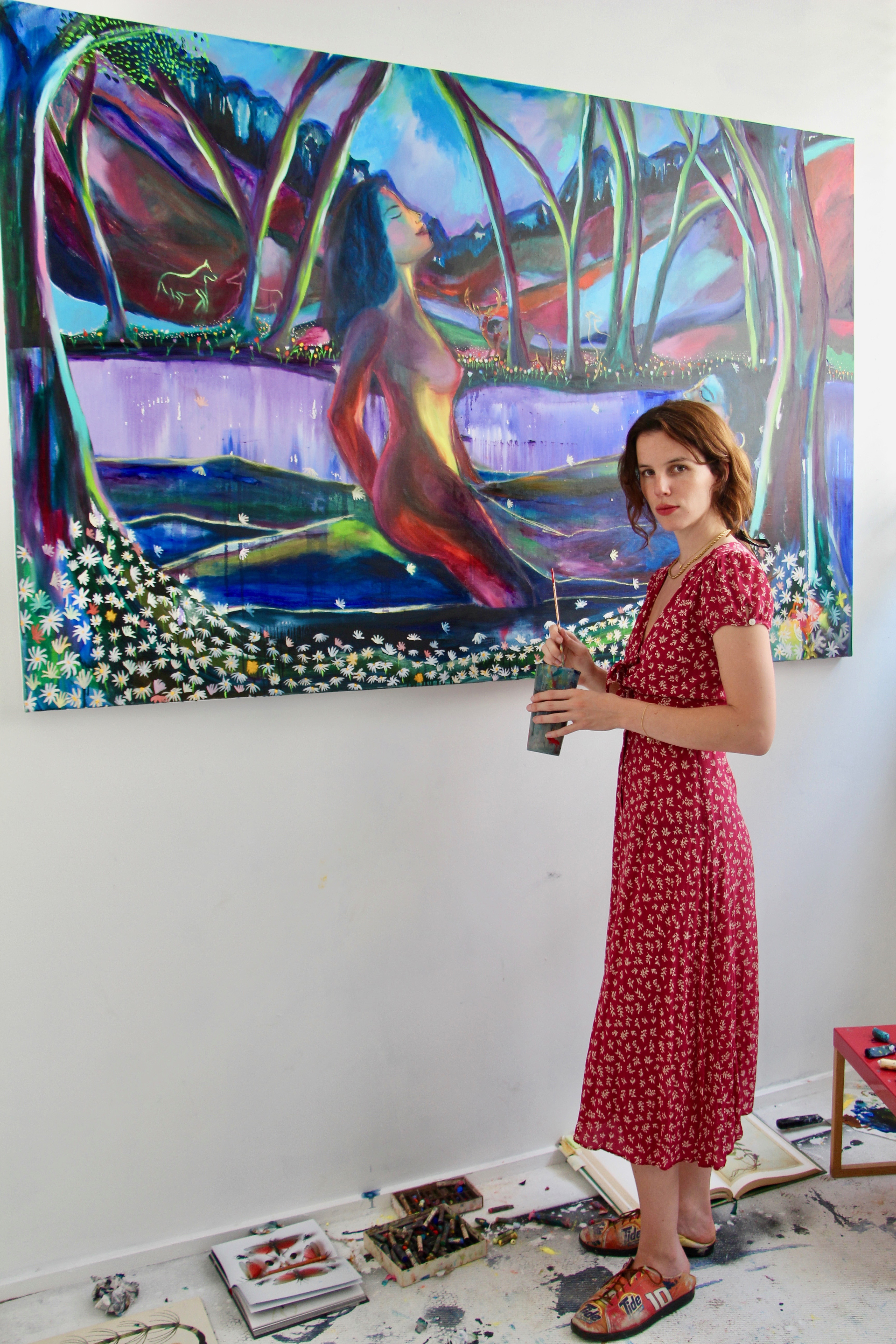
Representing nature today is not innocent.
There is nothing innocent about me representing nature and putting it together with human because I am devastated by the recent climatic events. Using this nature in my paintings is the only way to make people understand the ecological situation in which we are. Linking animals, humanity and nature could make people understand that we must respect our world. These paintings are my only way to contribute to the rescue of nature.
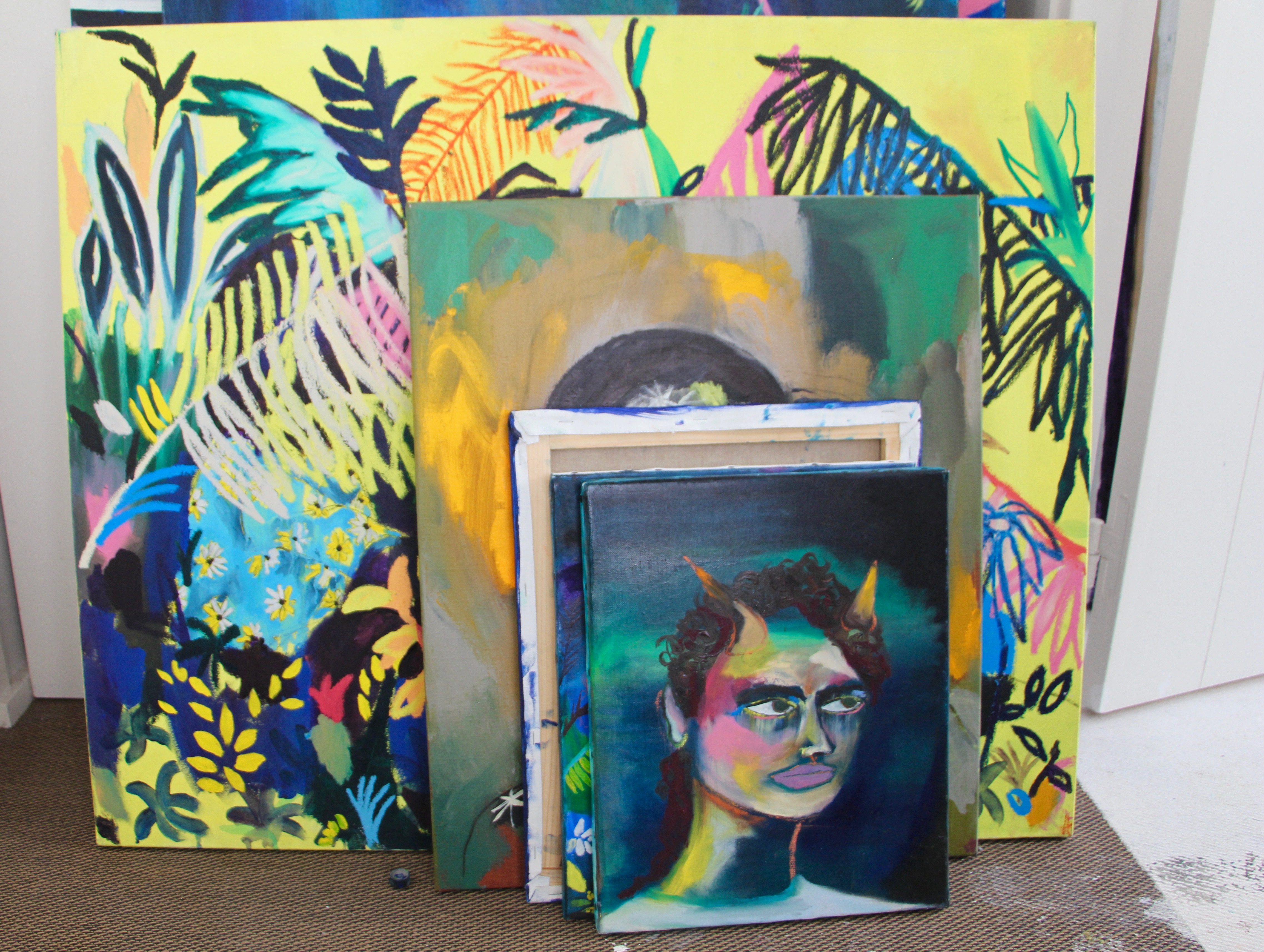
After all, there is something very utopian in your work, the dreamed unity of all things.
Absolutely, I get away from reality to create a world of my own in which I feel comfortable, where nature is protected, a world where harmony is the key word. I prefer to invent my own reality than to represent a reality already present. These paintings are like shields, they protect me from the outside world, from reality.

Your vision of nature gives us the impression of observing Edenic gardens!
I keep representing gardens of Eden. It is a subject that will always recur, all my life. For me, we all come from there, we are all cousins. Of course, I detach myself from the religious dimension and I only keep this idea of unity and harmony. It is about a question of mental habits, the Western viewer is used to the biblical visual codes which allow him to enter these universes that I create.

The Garden of Eden is also a man and a woman, equality in the duality of the sexes.
Exactly, my paintings are also built by the duality between male and female. Something is interesting in the verticality of the trunks which mark my paintings; symbols that evoke sexuality and masculinity. These trunks are the very structure of my paintings. When the trees are painted, I have my balance. Without this masculine verticality, I am lost in these very feminine and sinuous mountains where everything is more flexible. Balance can only exist when the balance of the sexes is respected.
“It is as if I was healing my wounds and massaging the pains of the world on the surface of the canvas.”
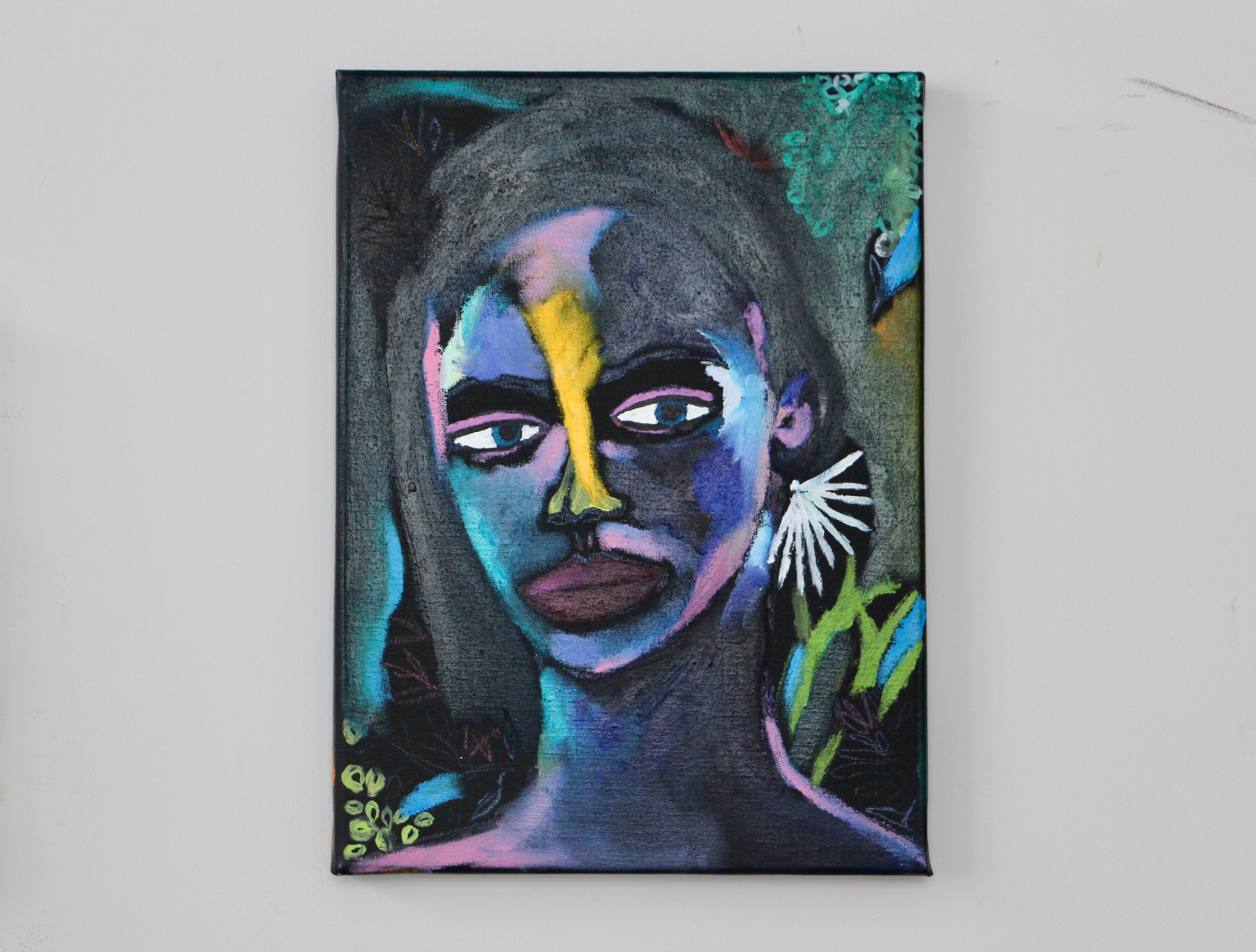
These men and women exude more than a sense of universality.
It is also about sex. Sensuality and love are also essential components for me, which pass through the gesture since the funds are done by my hands. It becomes a very tactile and intimate work where I mix the colors by caressing them, being in this way closer to the canvas. Without this, it is impossible for me to instinctively put color on emotion. It is as if I was healing my wounds and massaging the pains of the world on the surface of the canvas. There is this need to feel the material slip under the palm of my hand.
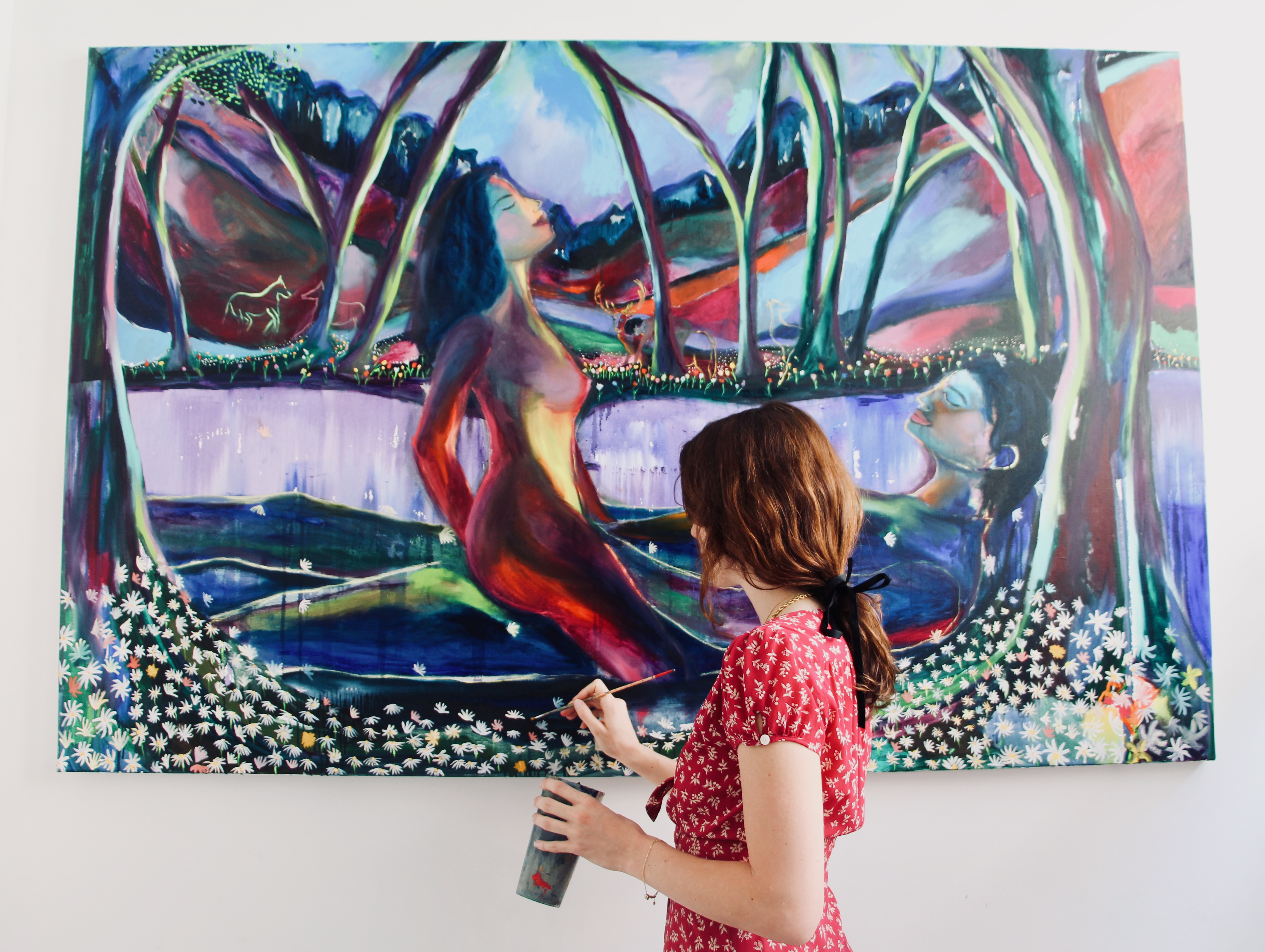
Does this sensuality serve the feminine and/or your femininity?
What is also important to me is the liberation of the female body from male gaze. I represent very feminine women, feeling comfortable in their bodies, reminiscent of ancient divinities. Indeed, the visual echo with Venus is obvious. It is the universal woman who represents love and beauty. It is by disguising these divinities with these characters and this nature that I express my femininity.
My paintings are therefore almost an expression of femininity. Nature is a woman.
Credits:
Coverphoto (Home) : Anahita Vessier
Photos : Anahita Vessier
Text: Raphaël Levy
Traduction : Raphaël Levy
Alice Grenier Nebout’s website
Share this post
